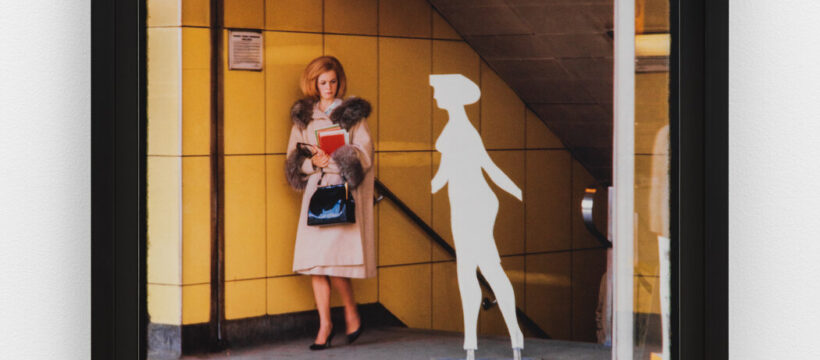Our attention spans have shrunk over the last half century. Consider Michael Snow’s “Wavelength” (1967), a rigorous 45-minute film made by the Canadian artist that stands as a monument of experimental cinema. Snow understood what he was up against: In 2003 he made a video called “WVLNT: WAVELENGTH for Those Who Don’t Have the Time: Originally 45 Minutes, Now 15!” It wasn’t merely a joke or a concession. Knowing that people were choosing to watch his film digitally sped-up, Snow used the occasion to create a brand-new work, superimposing 15-minute segments of the original onto one another like gauzy layers of celluloid film.
Both “Wavelength” and “WVLNT” are on view in “Michael Snow: A Life Survey (1955-2020),” an illuminating exhibition of approximately 80 works at The School, the gallerist Jack Shainman’s outpost in Kinderhook, N.Y. Rather than just focus on cinema, the exhibition also reveals how Snow, who died in January, worked across mediums and genres — painting, sculpture, installations and music. What really fascinated him was the question of how we see, hear and perceive reality and how art, language and technology continue to shape this experience.
Snow’s early, abstract paintings from the 1950s and ’60s are mostly unremarkable, mirroring artists like Paul Klee, Jasper Johns and Franz Kline — although there are glimmers of an obsession with how images are constructed, particularly in drawings and canvases divided into grids and boxes, a bit like filmstrips or storyboards.
His first really successful experiment, in 1963, was creating a cutout silhouette he called the Walking Woman, which became a signature motif. A similar project — using a woman’s body as an object or formal device — would be frowned upon in many quarters today. Snow’s Walking Woman, however, clearly reflects how representations of women were changing in the mass media, captured by artists like Andy Warhol, Roy Lichtenstein, Willem de Kooning and Ray Johnson — and particularly in mainstream animation. (Television shows like “The Jetsons” and “The Flintstones,” with their curvy-cutout-looking women — and whom the Walking Woman resembles — appeared in the early 1960s, and Snow’s first cinematic work in the ’50s was animated.)
A photograph titled “Walking Woman in the Subway” (1963) captures a startled lady reacting to a life-size plywood version of the Walking Woman propped in a subway entrance. It’s “funny” (i.e., you can see how it’s supposed to be funny), but also a little alarming. The 12-minute film “Little Walk” (1964-2005) is where Snow really matures artistically. Here, he uses the Walking Woman silhouette to create a magic show of contrasts: Positive/negative, figure/ground, surface/frame — the staples of what would be called “structuralist” film, the category in which Snow was enshrined.
Later, the Walking Woman largely receded, and Snow focused on the technical properties of various media. “One Two Three” (2002) features cutup black-and-white photographs of a single tree to create a stuttering vision — like a filmstrip, but in still photography. “Handed to Eyes” (1983) has oil paint applied to a chromogenic photograph, turning it into an updated Cézannesque still life. The wonderfully wacky “Flash! 20:49 15/6/2001” (2001) portrays a chaotic moment at a dining table, but all the toppling “effects” were acted out by the two performers, rather than digitally manufactured.
Time becomes a more potent medium in the film and video works. (Snow called “Wavelength,” a “time monument.”) The beautiful, stilling “Solar Breath” (Northern Caryatids)” (2002) shows a curtain with folds, like the Caryatid sculptures that hold up temples in Ancient Greece, flapping in the breeze. “The Corner of Braque and Picasso Streets” (2009) is a real-time video projection of a corner in Chelsea that plays with the ideas of images and a viewer’s perspective — just like the Cubists, but with the contemporary addition of video surveillance. The videos projected on four walls of a room in “Piano Sculpture” (2009) all focus on Snow’s hands playing the instrument — he was a professional jazz pianist — synchronized into an impossible performance: Through video, he creates a simultaneous piano solo and quartet.
Then there is “Wavelength” (1967). Shown in its original, 16-millimeter celluloid form every Saturday at 1 p.m., the film was made with a fixed camera slowly zooming into — eventually engulfing — a photograph of the sea attached to the opposite wall in a downtown Manhattan loft. The room in the film is lined with windows that resemble filmstrips and the moving images are accompanied by a rising tone produced by a sine wave generator. Bona fide “action” occurs, despite experimental film’s avoidance of narrative and story: The Beatles play on the radio and a character performed by the filmmaker Hollis Frampton drops dead. But in true avant-garde fashion, the real subject of “Wavelength” is film itself and how sound, light and time are structured by this technical medium.
“I wanted to make a summation of my nervous system,” Snow once wrote of the film — a work in which everything was “cosmically equivalent.” Given our current, upended nervous systems, “Wavelength” feels more like a meditation than an endurance test. Measured precision can’t be achieved in everyday life, but Snow’s film still feels structurally, cosmically sound.
Michael Snow: A Life Survey (1955-2020)
Through Dec. 16 at The School (Jack Shainman Gallery), 25 Broad Street, Kinderhook, N.Y., (518) 758-1628; jackshainman.com.
Source: Read Full Article
